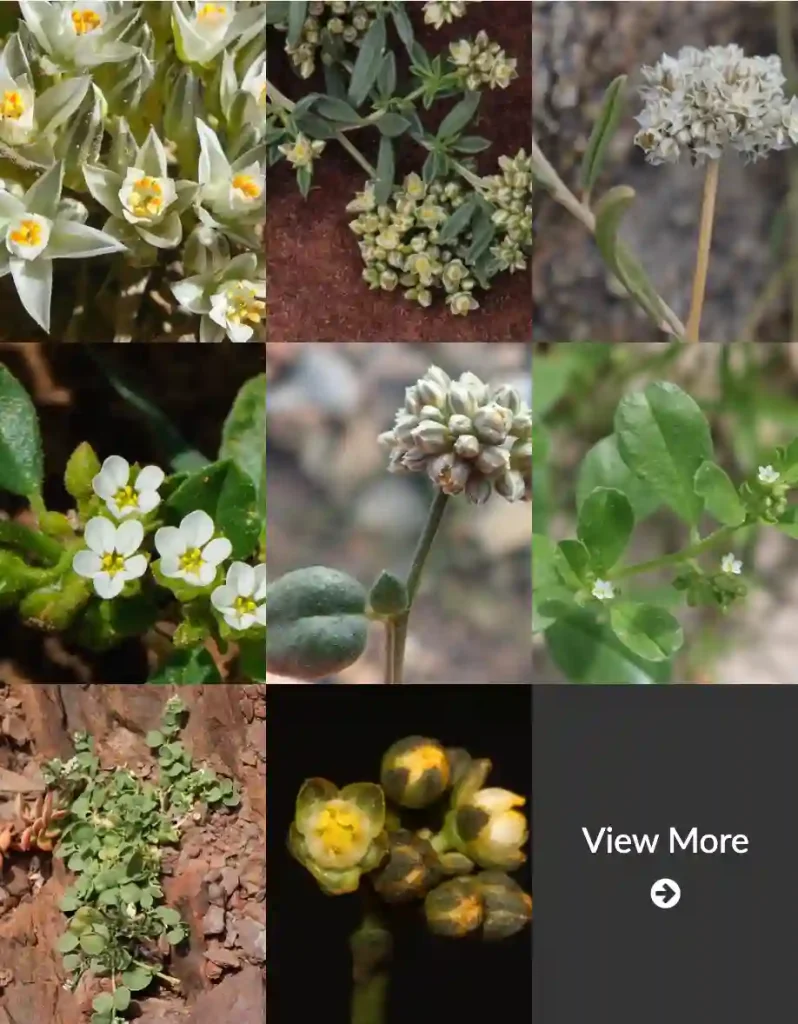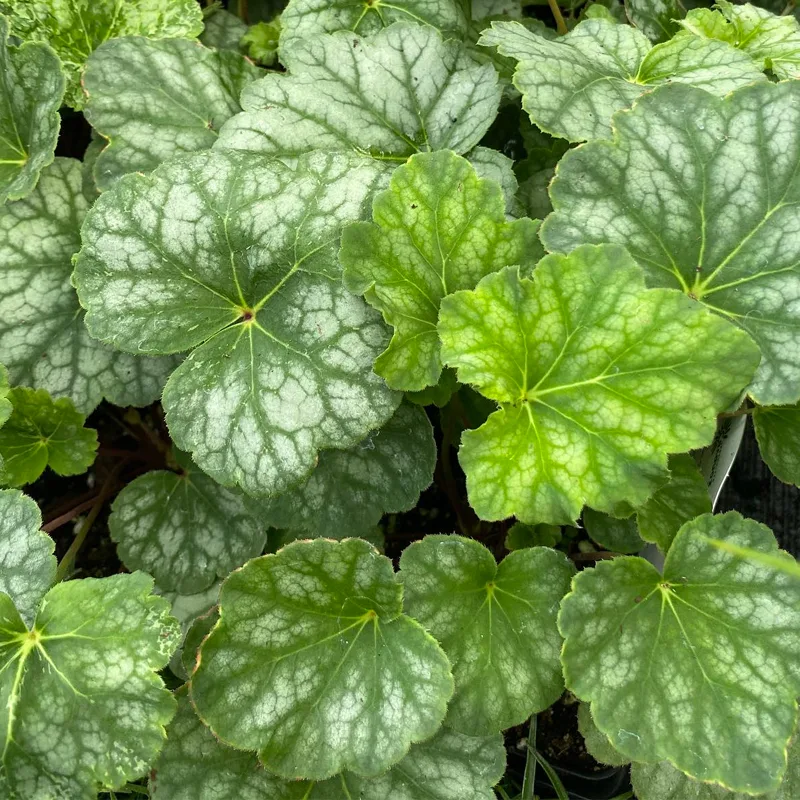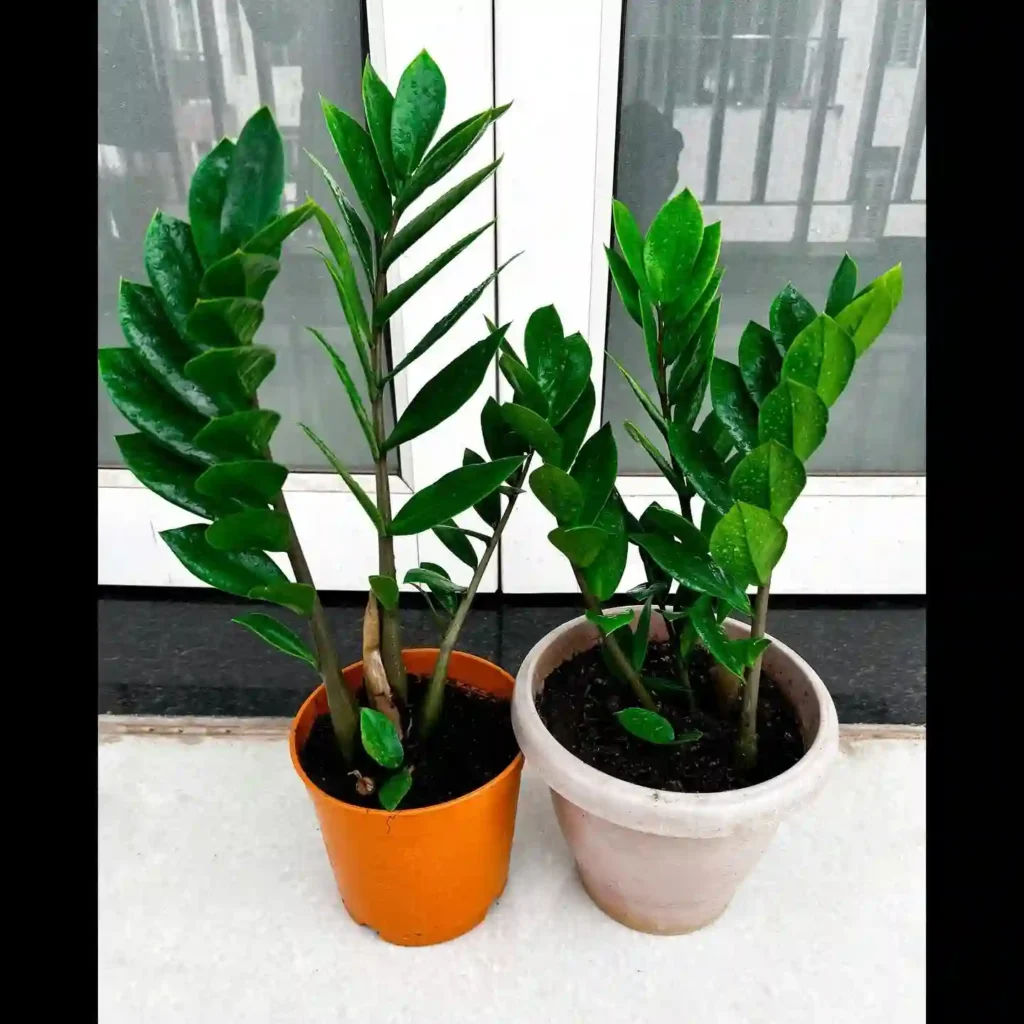
What is catmint?
Catmint, scientifically known as Nepeta, is a perennial herbaceous plant that belongs to the mint family, Lamiaceae. It’s native to Europe, Asia, and Africa but is commonly cultivated in gardens worldwide for its ornamental and aromatic qualities. Catmint typically has gray-green foliage and produces spikes of small lavender, blue, or white flowers during the summer months, which are attractive to bees and butterflies. One of the distinguishing features of catmint is its ability to attract cats, similar to catnip, due to the presence of nepetalactone, a compound that elicits a playful response in many felines. Catmint is also used in herbal medicine and can be brewed into teas or used as a flavoring in cooking. Overall, it’s a versatile and attractive plant that adds beauty and fragrance to gardens while also providing enjoyment for cats and potential health benefits for humans.
Ornamental Catmints
While catnip holds a special place in my heart, I’m equally enamored by the ornamental varieties of Nepeta. These plants are prized for their attractive foliage, long blooming season, and ability to attract pollinators like bees and butterflies.
- Nepeta adenoclada Bornm.
- Nepeta adenophyta Hedge
- Nepeta adenothrix (Rech.f.) Jamzad & Serpoosh.
- Nepeta agrestis Loisel.
- Nepeta alaghezi Pojark.
- Nepeta alatavica Lipsky
- Nepeta algeriensis de Noé
- Nepeta allotria Rech.f.
- Nepeta altimurana (Rech.f.) Jamzad & Serpoosh.
- Nepeta amicorum Rech.f.
- Nepeta amoena Stapf
- Nepeta anamurensis Gemici & Leblebici
- Nepeta annua Pall.
- Nepeta apuleji Ucria
- Nepeta archibaldii Rech.f.
- Nepeta argolica Bory & Chaub.
- Nepeta argutidens (Rech.f.) Jamzad & Serpoosh.
- Nepeta assadii Jamzad
- Nepeta assurgens Hausskn. & Bornm.
- Nepeta astorensis Shinwari & Chaudhri
- Nepeta atlantica Ball
- Nepeta autraniana Bornm.
- Nepeta avromanica Jamzad & Serpoosh.
- Nepeta azadkouhensis Saberamoli
- Nepeta azurea R.Br. ex Benth.
- Nepeta badachschanica Kudrjasch.
- Nepeta bakhtiarica Rech.f.
- Nepeta balouchestanica Jamzad & Ingr.
- Nepeta barbara Maire
- Nepeta barfakensis Rech.f.
- Nepeta batalica Reshi
- Nepeta baytopii Hedge & Lamond
- Nepeta bazoftica Jamzad
- Nepeta bellevii Prain
- Nepeta betonicifolia C.A.Mey.
- Nepeta binaloudensis Jamzad
- Nepeta bituminosa (Fisch. & C.A.Mey.) Jamzad & Serpoosh.
- Nepeta bodeana Bunge
- Nepeta × boissieri Willk.
- Nepeta bokhonica Jamzad
- Nepeta bombaiensis Dalzell
- Nepeta bornmuelleri Hausskn. ex Bornm.
- Nepeta botschantzevii Tscherneva
- Nepeta brachyantha Rech.f. & Edelb.
- Nepeta bracteata Benth.
- Nepeta brevifolia C.A.Mey.
- Nepeta bucharica Lipsky
- Nepeta caerulea Aiton
- Nepeta caesarea Boiss.
- Nepeta campestris Benth.
- Nepeta camphorata Boiss. & Heldr.
- Nepeta × campylantha Rech.f.
- Nepeta cataria L. Plant FAQs: Catnip – Nepeta Cataria
- Nepeta cephalotes Boiss.
- Nepeta chionophila Boiss. & Hausskn.
- Nepeta ciliaris Benth.
- Nepeta cilicica Boiss. ex Benth.
- Nepeta clarkei Hook.f.
- Nepeta coerulescens Maxim.
- Nepeta complanata Dunn
- Nepeta concolor Boiss. & Heldr. ex Benth.
- Nepeta conferta Hedge & Lamond
- Nepeta congesta Fisch. & C.A.Mey.
- Nepeta connata Royle ex Benth.
- Nepeta consanguinea Pojark.
- Nepeta crinita Montbret & Aucher ex Benth.
- Nepeta crispa Willd.
- Nepeta curviflora Boiss.
- Nepeta cyanea Steven
- Nepeta cyrenaica Quézel & Zaffran
- Nepeta czegemensis Pojark.
- Nepeta czukavinae Kamelin & Lazkov
- Nepeta daenensis Boiss.
- Nepeta decolorans Hemsl.
- Nepeta deflersiana Schweinf. ex Hedge
- Nepeta densiflora Kar. & Kir.
- Nepeta dentata C.Y.Wu & S.J.Hsuan
- Nepeta denudata Benth.
- Nepeta depauperata Benth.
- Nepeta dirmencii Yıld. & Dinç
- Nepeta discolor Royle ex Benth.
- Nepeta distans Royle ex Benth.
- Nepeta drassiana Reshi
- Nepeta dschuparensis Bornm.
- Nepeta duthiei Prain & Mukerjee
- Nepeta elegans Lipsky
- Nepeta elegantissima Jamzad & Serpoosh.
- Nepeta elliptica Royle ex Benth.
- Nepeta elymaitica Bornm.
- Nepeta erecta (Royle ex Benth.) Benth.
- Nepeta eremokosmos Rech.f.
- Nepeta eremophila Hausskn. & Bornm.
- Nepeta eriosphaera Rech.f. & Köie
- Nepeta eriostachya Benth.
- Nepeta ernesti-mayeri Diklic & V.Nikolic
- Nepeta everardii S.Moore
- Nepeta flavida Hub.-Mor.
- Nepeta floccosa Benth.
- Nepeta foliosa Moris
- Nepeta fordii Hemsl.
- Nepeta formosa Kudrjasch.
- Nepeta freitagii Rech.f.
- Nepeta glechomifolia (Dunn) Hedge
- Nepeta gloeocephala Rech.f.
- Nepeta glomerata Montbret & Aucher ex Benth.
- Nepeta glomerulosa Boiss.
- Nepeta glutinosa Benth.
- Nepeta gontscharovii Kudrjasch.
- Nepeta govaniana (Wall. ex Benth.) Benth.
- Nepeta graciliflora Benth.
- Nepeta granatensis Boiss.
- Nepeta grandiflora M.Bieb.
- Nepeta grata Benth.
- Nepeta griffithii Hedge
- Nepeta gumerica Reshi
- Nepeta hedgei Freitag
- Nepeta heinzii Idrees
- Nepeta heliotropifolia Lam.
- Nepeta hemsleyana Oliv. ex Prain
- Nepeta henanensis C.S.Zhu
- Nepeta hindostana (B.Heyne ex Roth) Haines
- Nepeta hispanica Boiss. & Reut.
- Nepeta hormozganica Jamzad
- Nepeta humilis Benth.
- Nepeta hymenodonta Boiss.
- Nepeta hystrix Greuter
- Nepeta iranshahrii Rech.f.
- Nepeta iraqensis Dirmenci
- Nepeta iraqo-iranica Haloob, Bordbar & Qader
- Nepeta isaurica Boiss. & Heldr. ex Benth.
- Nepeta ispahanica Boiss.
- Nepeta italica L.
- Nepeta jakupicensis Micevski
- Nepeta jomdaensis H.W.Li
- Nepeta juncea Benth.
- Nepeta knorringiana Pojark.
- Nepeta koeieana Rech.f.
- Nepeta kokamirica Regel
- Nepeta kokanica Regel
- Nepeta komarovii E.A.Busch
- Nepeta kotschyi Boiss.
- Nepeta kurdica Hausskn. & Bornm.
- Nepeta kurramensis Rech.f.
- Nepeta ladanolens Lipsky
- Nepeta laevigata (D.Don) Hand.-Mazz.
- Nepeta lagopsis Benth.
- Nepeta lamiifolia Willd.
- Nepeta lamiopsis Benth. ex Hook.f.
- Nepeta lancefolia Reshi
- Nepeta lasiocephala Benth.
- Nepeta latifolia DC.
- Nepeta laxiflora Benth.
- Nepeta leucolaena Benth. ex Hook.f.
- Nepeta linearis Royle ex Benth.
- Nepeta lipskyi Kudrjasch.
- Nepeta longibracteata Benth.
- Nepeta longiflora Vent.
- Nepeta longituba Pojark.
- Nepeta lophanthus (L.) Fisch. ex Loew
- Nepeta ludlow-hewittii Blakelock
- Nepeta macrosiphon Boiss.
- Nepeta mahanensis Jamzad & M.Simmonds
- Nepeta manchuriensis S.Moore
- Nepeta mariae Regel
- Nepeta maussarifii Lipsky
- Nepeta melissifolia Lam.
- Nepeta membranifolia C.Y.Wu
- Nepeta menthoides Boiss. & Buhse
- Nepeta meyeri Benth.
- Nepeta michauxii Briq.
- Nepeta micrantha Bunge
- Nepeta minuticephala Jamzad
- Nepeta mirei Quézel
- Nepeta mirzayanii Rech.f. & Esfand.
- Nepeta monocephala Rech.f.
- Nepeta monticola Kudr.
- Nepeta multibracteata Desf.
- Nepeta multicaulis Mukerjee
- Nepeta multifida L.
- Nepeta narynensis Kamelin & Lazkov
- Nepeta natanzensis Jamzad
- Nepeta nawarica Rech.f.
- Nepeta neocalycina Idrees
- Nepeta nepalensis Spreng.
- Nepeta nepetella L.
- Nepeta nepetoides (Batt. ex Pit.) Harley
- Nepeta nervosa Royle ex Benth.
- Nepeta nivalis Benth.
- Nepeta nuda L.
- Nepeta obtusicrena Boiss. & Kotschy ex Hedge
- Nepeta odorifera Lipsky
- Nepeta olgae Regel
- Nepeta orphanidea Boiss.
- Nepeta ouroumitanensis Franch.
- Nepeta oxyodonta Boiss.
- Nepeta pabotii Mouterde
- Nepeta padamica Reshi
- Nepeta paktiana Rech.f.
- Nepeta pamirensis Franch.
- Nepeta parnassica Heldr. & Sartori
- Nepeta paucifolia Mukerjee
- Nepeta persica Boiss.
- Nepeta petraea Benth.
- Nepeta pharica Prain
- Nepeta phyllochlamys P.H.Davis
- Nepeta pilinux P.H.Davis
- Nepeta pinetorum Aitch. & Hemsl.
- Nepeta platystegia (Rech.f.) Jamzad & Serpoosh. ex Idrees
- Nepeta podlechii Rech.f.
- Nepeta podostachys Benth.
- Nepeta pogonosperma Jamzad & Assadi
- Nepeta polyodonta Rech.f.
- Nepeta praetervisa Rech.f.
- Nepeta prattii H.Lév.
- Nepeta prostrata Benth.
- Nepeta pseudokokanica Pojark.
- Nepeta pubescens Benth.
- Nepeta pungens Benth.
- Nepeta racemosa Lam. Plant FAQs: Nepeta Racemosa – Eastern Cat Mint
- Nepeta raphanorhiza Benth.
- Nepeta rechingeri Hedge
- Nepeta rivularis Bornm.
- Nepeta roopiana Bordz.
- Nepeta rotundifolia (Benth.) Benth.
- Nepeta rtanjensis Diklic & Milojevic
- Nepeta rubella A.L.Budantzev
- Nepeta rugosa Benth.
- Nepeta saccharata Bunge
- Nepeta sahandica Noroozi & Ajani
- Nepeta santoana Popov
- Nepeta saturejoides Boiss.
- Nepeta schiraziana Boiss.
- Nepeta schmidii Rech.f.
- Nepeta schrenkii (Levin) Sennikov
- Nepeta schtschurowskiana Regel
- Nepeta schugnanica Lipsky
- Nepeta scordotis L.
- Nepeta septemcrenata Ehrenb. ex Benth.
- Nepeta sessilifolia Bunge
- Nepeta sessilis C.Y.Wu & S.J.Hsuan
- Nepeta shahmirzadensis Assadi & Jamzad
- Nepeta sheilae Hedge & R.A.King
- Nepeta sibirica L.
- Nepeta sorgerae Hedge & Lamond
- Nepeta sosnovskyi Askerova
- Nepeta souliei H.Lév.
- Nepeta spathulifera Benth.
- Nepeta sphaciotica P.H.Davis
- Nepeta spruneri Boiss.
- Nepeta stachyoides Coss. ex Batt.
- Nepeta staintonii Hedge
- Nepeta stenantha Kotschy & Boiss.
- Nepeta stewartiana Diels
- Nepeta straussii Hausskn. & Bornm.
- Nepeta stricta (Banks & Sol.) Hedge & Lamond
- Nepeta suavis Stapf
- Nepeta subcaespitosa Jehan
- Nepeta subhastata Regel
- Nepeta subincisa Benth.
- Nepeta subintegra Maxim.
- Nepeta subnivalis (Lipsky) Sennikov
- Nepeta subsessilis Maxim.
- Nepeta sudanica F.W.Andrews
- Nepeta sulaimanica A.Sultan, Jamzad & N.Khan
- Nepeta sulfuriflora P.H.Davis
- Nepeta sungpanensis C.Y.Wu
- Nepeta supina Steven
- Nepeta taxkorganica Y.F.Chang
- Nepeta tenuiflora Diels
- Nepeta tenuifolia Benth.
- Nepeta teucriifolia Willd.
- Nepeta teydea Webb & Berthel.
- Nepeta tibestica Maire
- Nepeta × tmolea Boiss.
- Nepeta trachonitica Post
- Nepeta transiliensis Pojark.
- Nepeta trautvetteri Boiss. & Buhse
- Nepeta trichocalyx Greuter & Burdet
- Nepeta tschimganica (Lipsky) Jamzad & Serpoosh.
- Nepeta tuberosa L.
- Nepeta turanica Jamzad & Serpoosh.
- Nepeta turcica (Dirmenci, Yıldız & Hedge) Jamzad & Serpoosh.
- Nepeta tytthantha Pojark.
- Nepeta uberrima Rech.f.
- Nepeta ucranica L.
- Nepeta veitchii Duthie
- Nepeta velutina Pojark.
- Nepeta viscida Boiss.
- Nepeta vivianii (Coss.) Bég. & Vacc.
- Nepeta wettsteinii Heinr.Braun
- Nepeta wilsonii Duthie
- Nepeta woodiana Hedge
- Nepeta wuana H.J.Dong, C.L.Xiang & Jamzad
- Nepeta yanthina Franch.
- Nepeta yazdiana (Rech.f.) Jamzad & Serpoosh.
- Nepeta yesoensis (Franch. & Sav.) B.D.Jacks.
- Nepeta zandaensis H.W.Li
- Nepeta zangezura Grossh.
Is catmint invasive?
I’ve found catmint to be a bit of a double-edged sword. On one hand, it’s a beautiful and fragrant plant that attracts bees and butterflies, which I absolutely love seeing in my garden. However, it can be quite invasive if left unchecked. I remember planting just a small patch of catmint a few years ago, and now it seems to be popping up everywhere! While I appreciate its resilience and ability to thrive in various conditions, I’ve had to put in quite a bit of effort to keep it from taking over other areas of my garden. Overall, I’d say it’s a lovely addition to any garden but requires careful monitoring to prevent it from spreading too aggressively.
Is catmint edible?
I’ve never personally tried eating catmint myself, but I know that it’s considered safe for consumption by humans. I’ve read that some people use it in herbal teas or as a flavoring in cooking, similar to other mint varieties. However, I’ve mainly grown catmint for its ornamental value and its ability to attract pollinators to my garden. I might consider experimenting with using it in culinary endeavors in the future, but for now, I’m content to enjoy its beauty and fragrance in my garden.
Does catmint attract cats? Is catmint safe for cats?
Catmint can indeed attract cats due to its aromatic compounds, which are similar to those found in catnip. Some cats may exhibit playful behavior or rub against catmint when they encounter it. However, while catmint is generally safe for cats, it’s essential to monitor their interactions with the plant. In small amounts, catmint is unlikely to cause harm to cats, but consuming large quantities could potentially lead to digestive issues. As with any plant, it’s wise to observe your cat’s behavior around catmint and ensure they don’t ingest excessive amounts. Overall, catmint can be a safe and enjoyable enrichment for cats in moderation.
Is catmint the same as catnip?
Yes, catmint and catnip are closely related plants, but they’re not exactly the same. Catnip (Nepeta cataria) is a specific species of plant within the Nepeta genus, known for its euphoric effects on cats due to the compound nepetalactone found in its leaves and stems. Catnip is the variety commonly associated with eliciting playful behavior in cats. On the other hand, catmint refers to several species within the Nepeta genus, including Nepeta mussinii and Nepeta faassenii, which are often grown for their ornamental value in gardens. While both catnip and catmint contain nepetalactone and may have similar effects on cats, catmint is typically grown more for its aesthetic appeal in gardens rather than specifically for its use with cats.
Is catmint a perennial?
Yes, catmint is indeed a perennial plant. Perennials are plants that live for more than two years, and catmint fits this description. It regrows from its roots year after year, typically blooming during the spring and summer months. This makes it a great choice for gardeners looking for long-lasting plants that return each growing season without needing to be replanted. In my experience, catmint has been a reliable and enduring addition to my garden, coming back year after year to provide its beautiful foliage and aromatic flowers.
Is catmint deer resistant?
In my experience, catmint is generally considered to be deer resistant. Deer typically avoid plants with strong scents or tastes, and catmint’s aromatic foliage can act as a deterrent. While no plant is completely deer-proof, catmint is often listed as a good option for gardens in areas where deer browsing is a concern. However, it’s worth noting that deer preferences can vary depending on factors such as local food availability and population density. In my garden, I’ve found that catmint has remained largely untouched by deer, which is a relief considering the damage they can cause to other plants.
Is catmint safe for dogs?
Catmint is generally considered safe for dogs, but as with any plant, it’s essential to monitor your pet’s interactions with it. While catmint doesn’t contain any known toxins that are harmful to dogs, ingesting large quantities of plant material could potentially lead to digestive upset, such as vomiting or diarrhea. In my experience, my dog has shown little interest in catmint compared to my cat, but every pet is different. If you’re concerned about your dog consuming catmint, you may want to supervise them in the garden or consider planting it in an area they can’t access. Overall, while catmint is not typically harmful to dogs, it’s always best to err on the side of caution and prevent excessive consumption.
When to cut back catmint?
In my experience, the best time to cut back catmint is in the early spring, just as new growth begins to emerge. This timing allows you to remove any dead or damaged growth from the previous season and encourages the plant to produce fresh, healthy foliage. I typically wait until I see new shoots starting to appear at the base of the plant before pruning. Using clean and sharp pruning shears, I carefully trim back the stems to just above the new growth, being sure not to cut too far down as this can damage the plant. This early spring pruning helps to rejuvenate the catmint and promotes a more compact and tidy growth habit throughout the growing season. Additionally, I may also deadhead spent flowers throughout the summer to encourage continuous blooming and maintain the plant’s appearance. Overall, regular pruning and maintenance help to keep catmint looking its best and ensure its long-term health in the garden.
When do catmint bloom?
Catmint typically blooms in the late spring to early summer, depending on your climate and specific variety. In my experience, I’ve seen catmint start to bloom around late May or early June, with its lovely spikes of lavender, blue, or white flowers appearing atop the foliage. The exact timing of the blooming period can vary based on factors such as temperature and daylight hours.
How long does catmint bloom?
The duration of catmint’s blooming period can also vary depending on growing conditions and the specific variety. Generally, catmint will bloom for several weeks, often lasting into the summer months. With proper care, deadheading spent flowers can encourage continued blooming throughout the season, extending the overall flowering period. In my garden, I’ve enjoyed several weeks of beautiful blooms from my catmint plants each year, which adds color and interest to the landscape during the early to midsummer months.
Does catmint repel mosquitoes?
While catmint is known for its aromatic foliage and is often said to repel certain insects, such as mosquitoes, its effectiveness in this regard can vary. Catmint contains nepetalactone, a compound that gives it its distinctive scent and also acts as a natural insect repellent. Some people claim that planting catmint around outdoor living areas can help deter mosquitoes, but scientific evidence supporting this claim is limited.
In my experience, while catmint may have some insect-repelling properties, it’s not a foolproof solution for keeping mosquitoes at bay. Other factors, such as the concentration of nepetalactone in the plant and environmental conditions, can influence its effectiveness. While I enjoy growing catmint for its ornamental value and its attractiveness to pollinators, I wouldn’t rely solely on it as a mosquito repellent. Instead, I use a combination of strategies, such as citronella candles, insect repellent sprays, and removing standing water, to help minimize mosquito presence in my outdoor spaces.
Is catmint evergreen?
Catmint is typically not evergreen in most climates. It is a perennial plant, meaning it regrows from its roots year after year, but it tends to be deciduous, meaning it loses its leaves in the winter months. In colder climates, catmint may die back to the ground entirely in the winter and regrow from the roots in the spring. However, in milder climates, some varieties of catmint may retain their leaves throughout the winter, especially if temperatures remain relatively mild. In my experience, the foliage of catmint often remains green and attractive during the growing season but may turn brown or die back in colder weather. Overall, while catmint is a hardy and resilient plant, it’s not typically considered evergreen in most regions.
If i die, water my plants!



